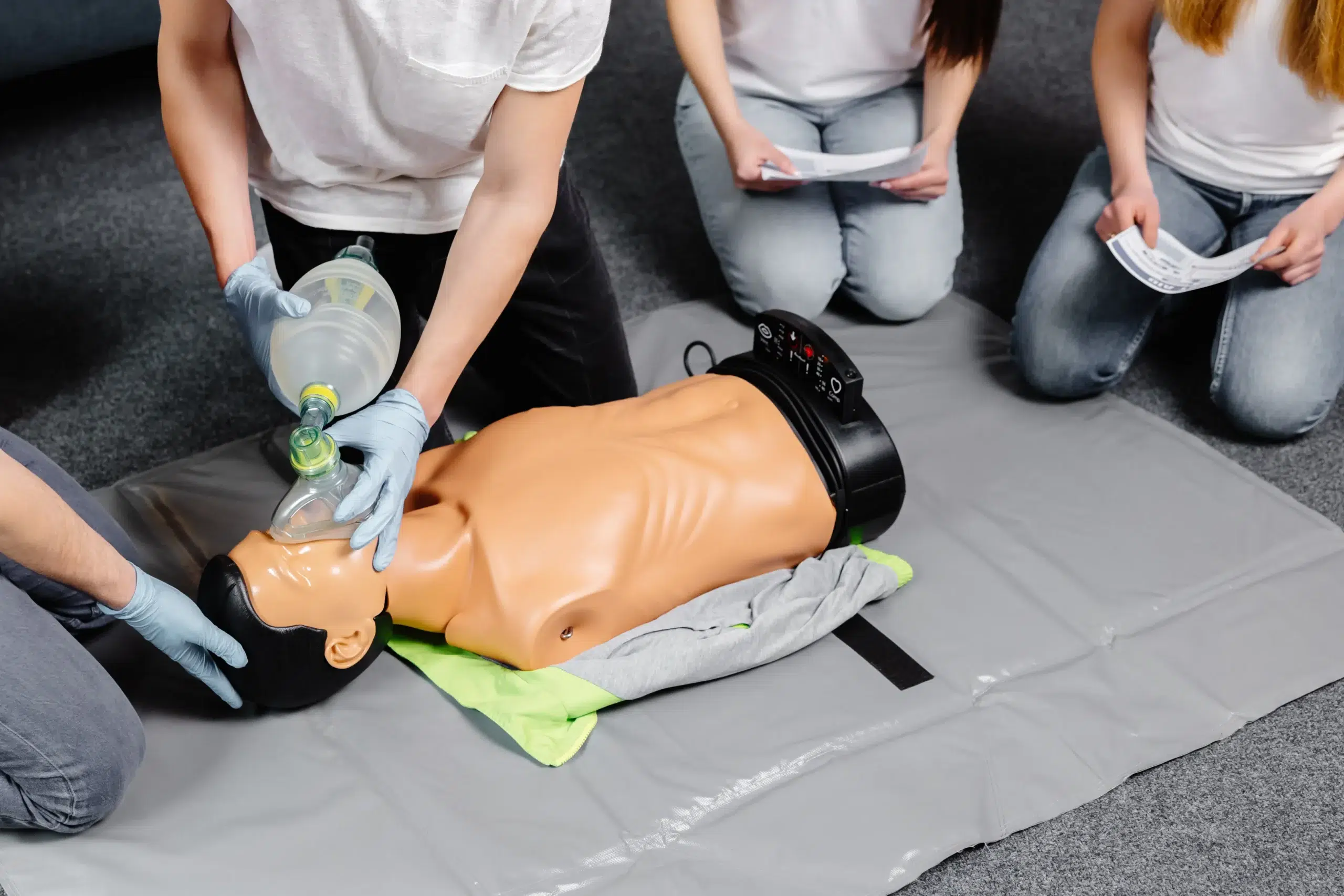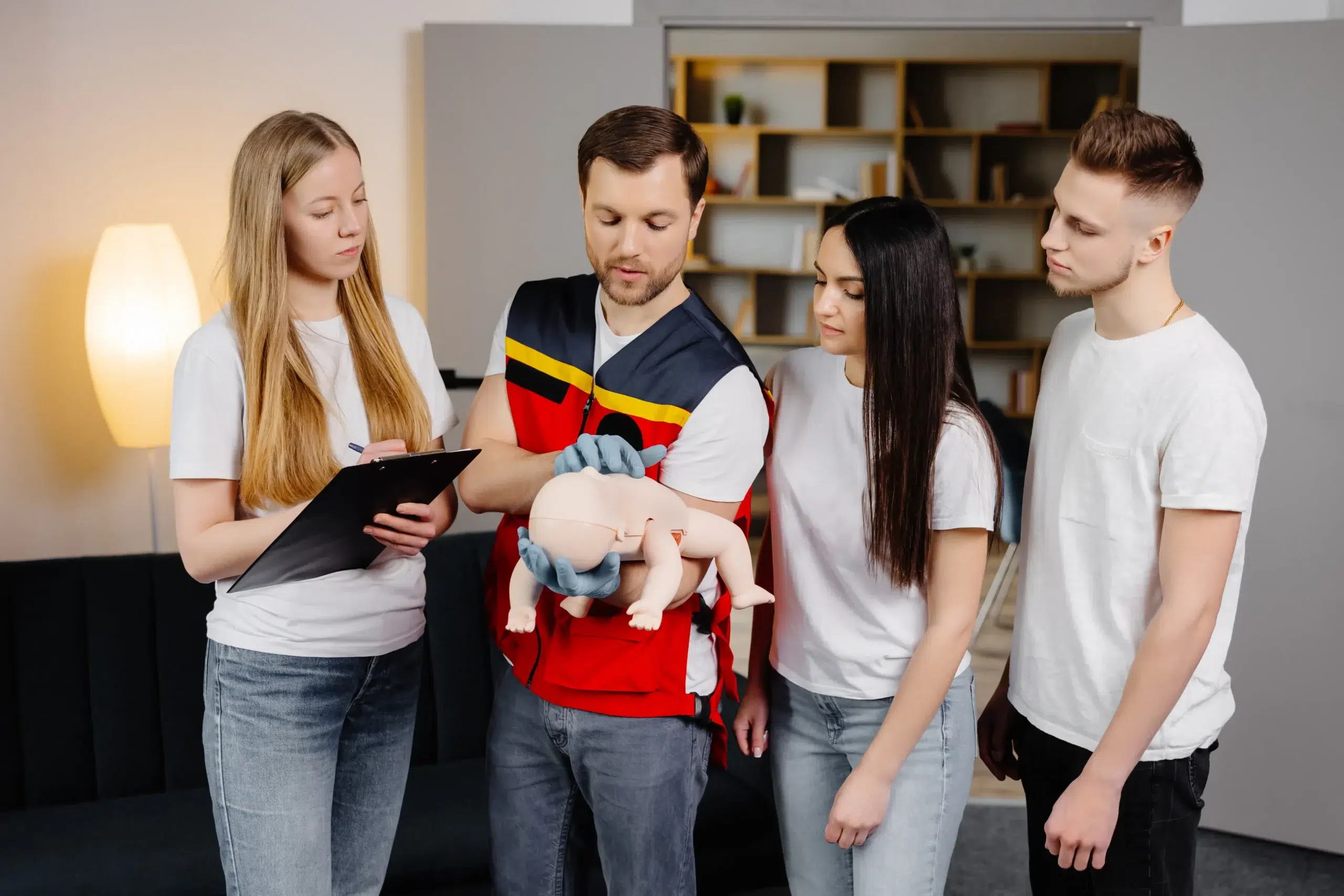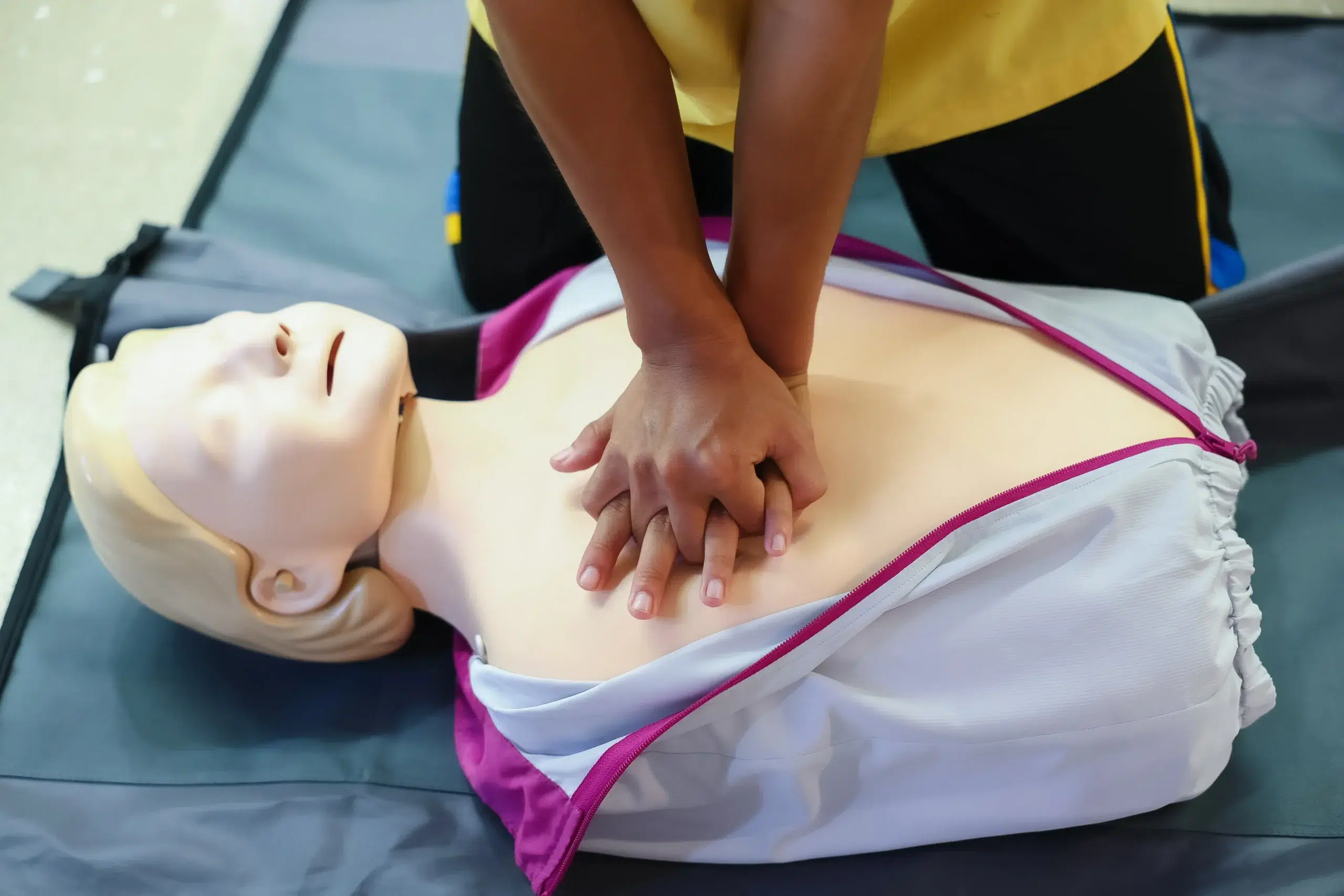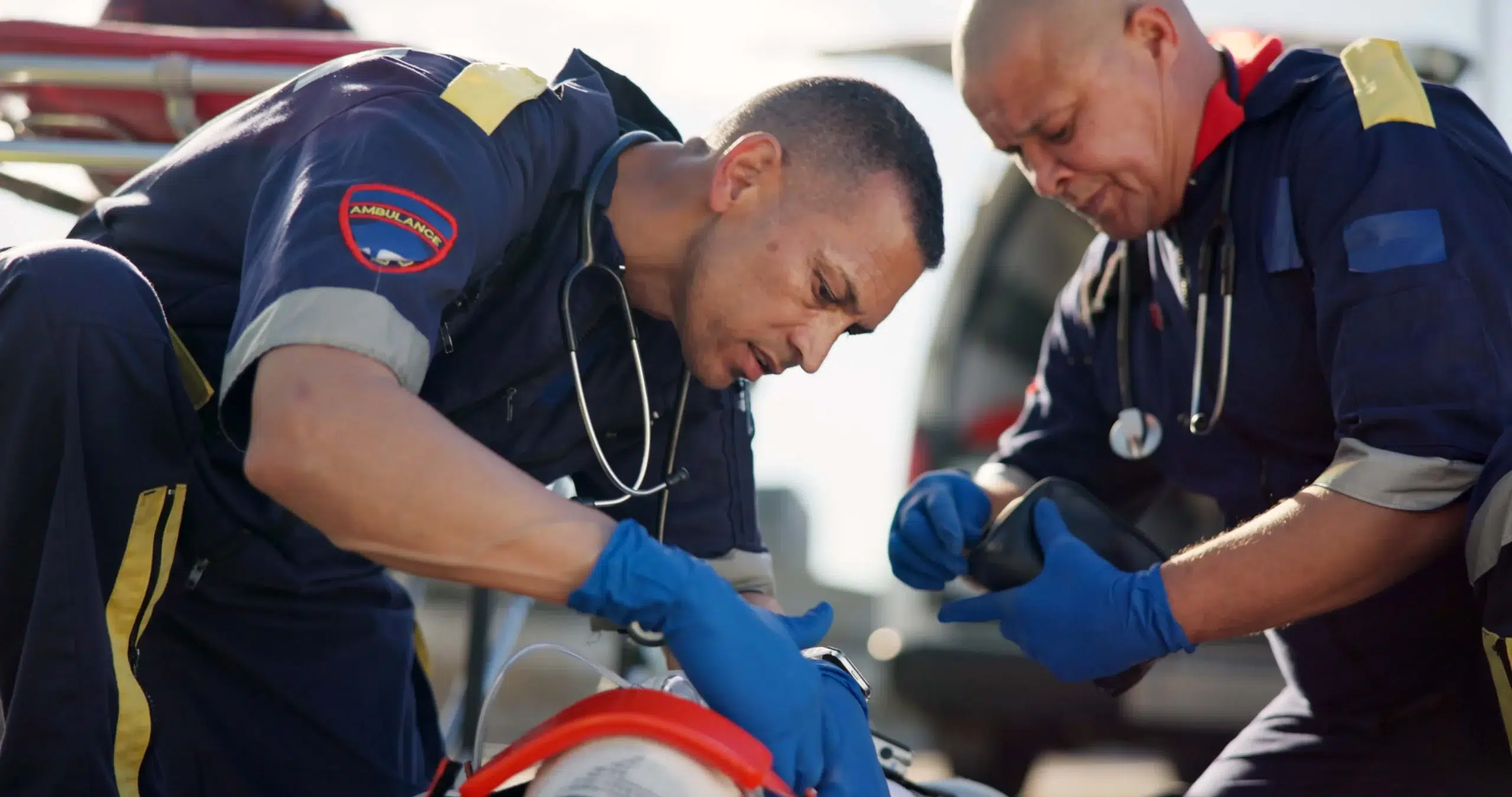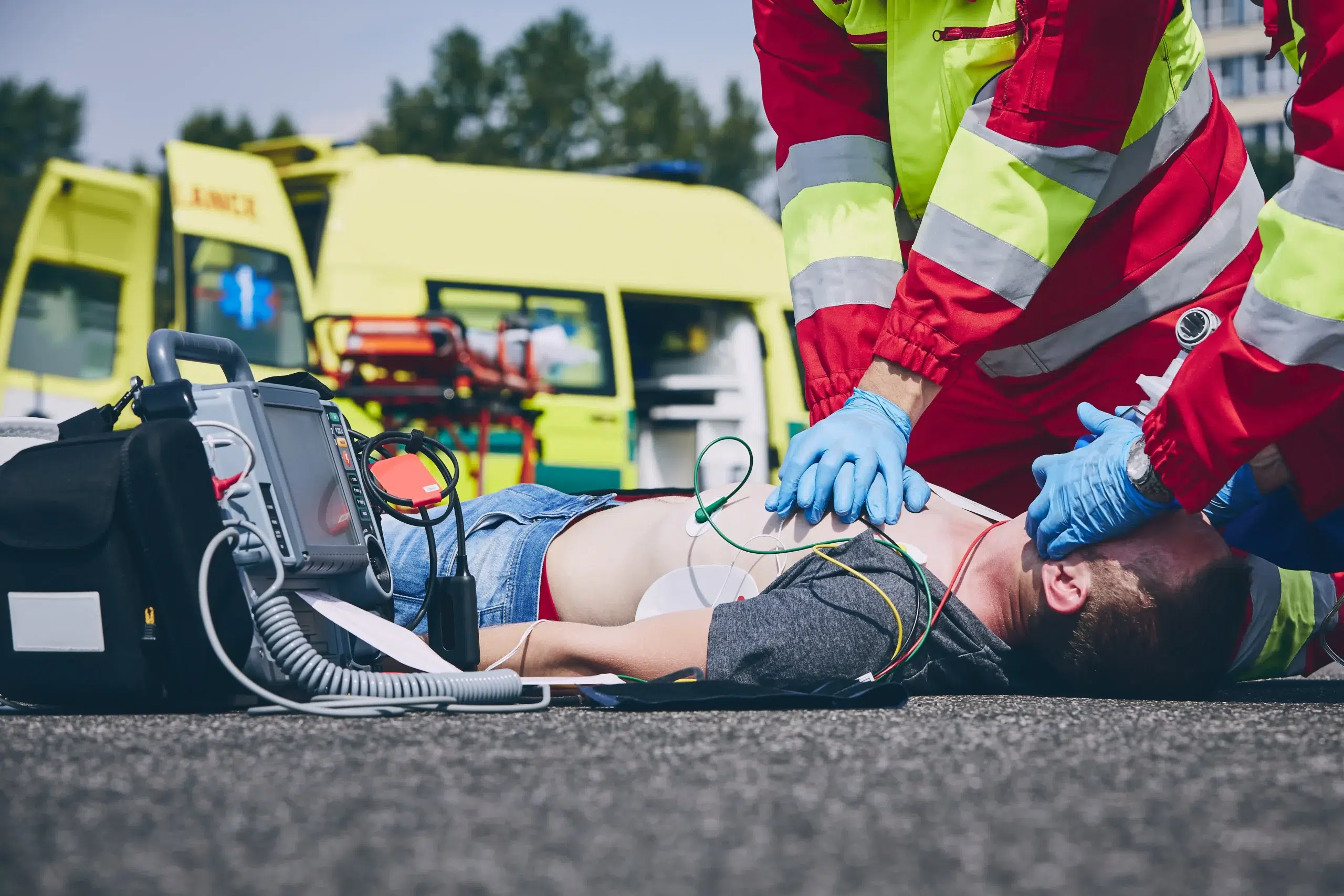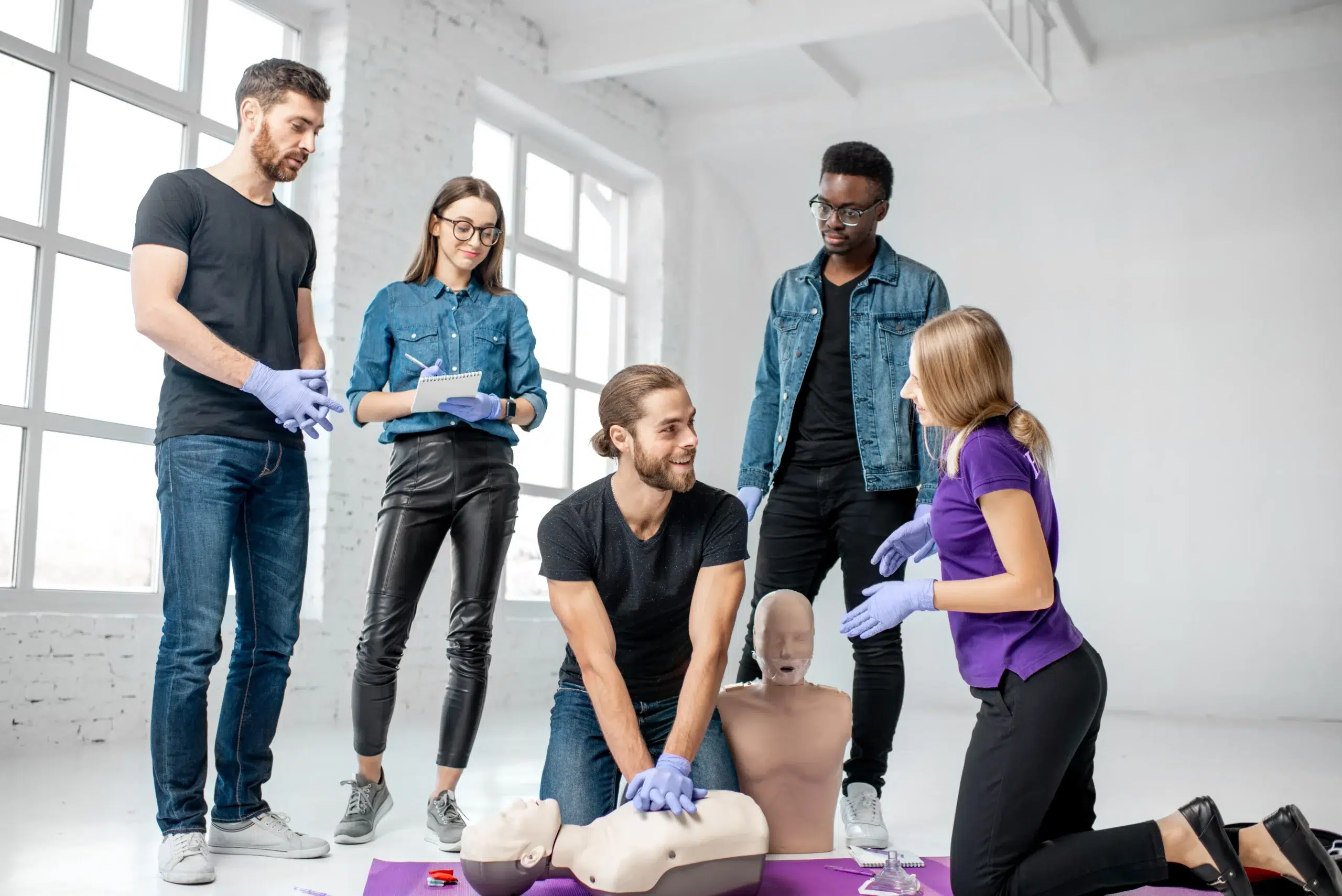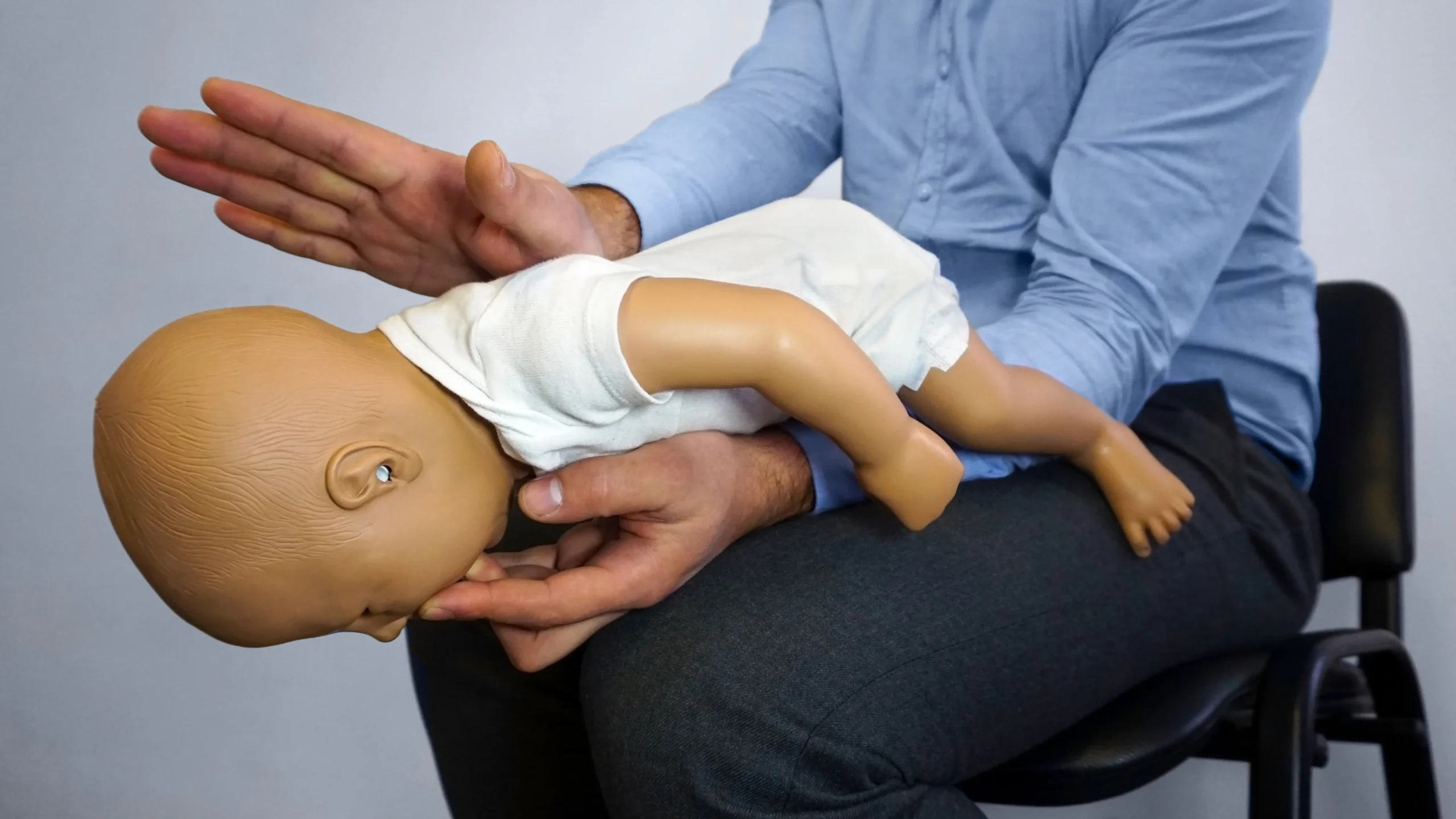Pediatric CPR & First Aid Classes in San Jose: Accidents happen, and when they involve children, knowing how to respond quickly and effectively can be life-saving. Pediatric CPR and first-aid training in San Jose provides parents, caregivers, and childcare providers with the essential skills to handle emergencies involving infants and children. This guide will help you find the right training program in San Jose, covering everything from the basics of CPR and first aid to finding a class that fits your schedule and budget. We’ll also discuss the differences between infant, child, and adult CPR, the importance of hands-on practice, and the certification process. Plus, we’ll explore additional resources and support available in San Jose to help you maintain your skills and confidence. Let’s dive in and find the perfect pediatric CPR and first-aid class for you.
Key Takeaways
- Pediatric CPR and First Aid equip you to handle emergencies: These courses provide the knowledge and skills to respond confidently to various situations involving infants and children, from breathing difficulties to common injuries.
- Choose the right class format for your learning style: Whether you prefer in-person instruction, online flexibility, or a blended approach, find a course that suits your needs and schedule. Consider factors like class size, instructor qualifications, and certification.
- Maintaining your certification is crucial: CPR guidelines and best practices evolve, so staying current through recertification ensures you’re always prepared to provide effective care. Explore various recertification options and resources to keep your skills sharp.
What is Pediatric CPR and First Aid?
Pediatric CPR and First Aid classes teach parents, caregivers, and childcare providers how to respond to emergencies involving infants and children. These courses cover life-saving techniques like CPR, choking rescue procedures, and first aid for common childhood injuries and illnesses. Knowing how to handle these situations can make a real difference. For providers working with children in Newark, Fremont, and San Jose, California, these skills are especially valuable.
Why Parents and Caregivers Need Training
Learning infant CPR is a critical skill for parents and caregivers. Pediatricians often stress its importance, as thousands of children in the US require CPR in hospitals every year due to cardiac arrest. While many survive the initial event, sadly, not all make it home. Being prepared for these emergencies can significantly impact a child’s chances of survival. Equipping yourself with these skills offers peace of mind and empowers you to act quickly and effectively when seconds count. Our CPR and First Aid certification courses in Newark can help you gain these essential skills.
Key Differences: Infant, Child, and Adult CPR
CPR techniques vary depending on the age of the person needing assistance. There are crucial differences between infant, child, and adult CPR. This resource highlights those differences. For both children and infants, rescue breaths are necessary in addition to chest compressions. The ratio of compressions to breaths also changes based on whether you’re assisting an infant, child, or adult. Understanding these distinctions is vital for providing appropriate and effective care in an emergency. Taking a Pediatric CPR and First Aid class will teach you these differences and prepare you to respond confidently in various situations. Check our BLS courses in Newark for upcoming training opportunities.
Where to Find Pediatric CPR & First Aid Classes in San Jose
Finding the right pediatric CPR and first aid class can feel overwhelming, but several reputable organizations and training centers offer these essential courses in San Jose. Here are a few options to explore:
Safety Training Seminars
Safety Training Seminars, a woman-owned AHA Training Center, offers various American Heart Association courses, including CPR, first aid, and BLS. They’re known for their accessible approach, with a low price guarantee and convenient schedules in over 60 cities. For those in the San Jose area, their Newark location offers CPR and first aid certification courses and group discounts. You can view the BLS course schedule for their Newark location directly. They also offer information on topics like RQI classes and have a low price guarantee.
American Red Cross
The American Red Cross is a trusted name in emergency preparedness, offering various CPR and first aid classes, including pediatric training, in San Jose. Their courses cover essential skills for responding to emergencies involving infants and children. Find a Red Cross CPR class near you.
American Heart Association
The American Heart Association provides comprehensive training in CPR, first aid, and advanced life support. They offer a range of courses suitable for healthcare providers, parents, and caregivers. Explore their CPR class options in San Jose.
Emergency & Health Training Center
The Emergency & Health Training Center specializes in EMSA Pediatric CPR and First Aid classes designed specifically for childcare providers. These courses meet state licensing requirements and equip caregivers with the skills to handle emergencies. Learn more about their EMSA Pediatric CPR and First Aid classes.
First Support CPR and First Aid Training
First Support CPR and First Aid Training offers flexible scheduling for various CPR and first aid courses, including pediatric training. This makes it easier for both individuals and groups to get certified. Visit their website for more details.
HeartShare Training Services
HeartShare Training Services focuses on providing practical, hands-on training in pediatric CPR and first aid. Their courses aim to give caregivers the confidence to respond effectively in emergencies. You can find reviews and more information on Yelp.
Class Formats & Schedules
Finding the right Pediatric CPR and First Aid class means choosing a format and schedule that fits your life. Luckily, there are several options available in San Jose, from traditional in-person classes to online and blended learning experiences. Let’s explore the pros and cons of each.
In-Person Training
In-person classes offer a hands-on learning environment with direct interaction with an instructor. This format allows for immediate feedback, personalized guidance, and the chance to practice skills in real-time with other students. If you thrive in a structured, face-to-face setting, in-person training offers a comprehensive and engaging learning experience. Organizations like the American Red Cross offer in-person CPR and First Aid classes in San Jose. This option ensures you receive expert instruction and develop job-relevant skills that meet OSHA compliance standards. For a local option, consider checking out Safety Training Seminars’ CPR and First Aid course offerings.
Online Courses
Online courses offer flexibility and convenience, allowing you to learn at your own pace and on your schedule. This format is ideal for busy parents, caregivers, or professionals with demanding schedules. You can complete the coursework anywhere with internet access, making it a great option for those who prefer self-directed learning. Keep in mind that online courses often require an in-person skills session for certification. The Red Cross also offers blended learning that includes online coursework and a hands-on skills session.
Blended Learning
Blended learning combines online learning with the practical application of in-person skills sessions. You complete the theoretical portion online at your own pace, then attend a shorter in-person session to demonstrate your skills and receive your certification. This format is a popular choice for those who want flexibility without sacrificing hands-on training. The American Heart Association often uses this approach, allowing participants to complete online portions of courses and then attend a skills check.
Find a Schedule That Works for You
With various class formats available, finding a schedule that accommodates your needs is easier than ever. Many providers offer classes on evenings and weekends. Some organizations, like First Support CPR and First Aid Training, offer regular classes on set days or can schedule a special class for smaller groups. Check with your chosen provider for their schedule and don’t hesitate to ask about flexible options. If you’re looking for classes in Newark, check out Safety Training Seminars’ BLS course schedule. They also offer discounted group rates which might work well for coordinating a class with friends, family, or colleagues.
What Happens in a Pediatric CPR & First Aid Class?
Knowing what to expect can help you feel more prepared and confident going into a pediatric CPR and first aid class. Here’s a glimpse at what a typical class covers:
Skills You’ll Learn
Pediatric CPR and first aid classes teach you how to respond to emergencies involving infants and children. You’ll learn to recognize the signs of a medical emergency, including breathing and cardiac emergencies, and how to provide appropriate care. The curriculum covers age-specific procedures for both infants and children, ensuring you’re prepared for a variety of situations. This information is regularly updated and reviewed by experts, like the Red Cross Scientific Advisory Council, so you can be sure you’re learning the most current practices. You’ll also gain practical first aid skills to address common childhood injuries such as cuts, burns, and choking.
Hands-On Practice
Hands-on practice is a crucial part of any CPR and first aid class. You’ll practice the techniques you learn on mannequins, building the confidence to perform them in a real emergency. Instructors create a supportive learning environment where you can ask questions and receive personalized feedback. These instructors often have experience as EMTs and medical professionals, bringing real-world expertise to the classroom. This practical training helps develop muscle memory and ensures you can effectively apply these skills under pressure.
Certification Process & Validity
After successfully completing the course, you’ll receive a certification valid for two years. You’ll usually receive your certificate the same day as the class. Renewal courses are readily available so you can easily maintain your skills and credentials. This two-year certification period is standard across most organizations offering CPR and first aid training.
Costs & Discounts
Finding a CPR class that fits your budget is easier than you think. Many providers in San Jose offer competitive pricing and discounts, making these essential skills accessible to everyone. Knowing what to look for can help you find the best value.
Group & Student Discounts
If you’re training with friends, family, or coworkers, ask about group discounts. Many training centers, like First Support CPR and First Aid Training, offer special rates for groups. This can be a great option for childcare providers, businesses, or community groups looking to certify multiple people at once. Students are often eligible for discounts too—just ask your chosen provider about student rates. At Safety Training Seminars, we offer discounted group rates to make training more affordable.
Low Price Guarantees
Look for training centers that offer a low price guarantee. This demonstrates their commitment to providing affordable training and gives you confidence that you’re getting the best possible price for a high-quality course. Safety Training Seminars offers a low price guarantee, ensuring that you receive top-notch training without overspending. We believe essential life-saving skills should be within everyone’s reach.
Promotions
Keep an eye out for promotions and special offers. Training centers often run seasonal promotions or offer discounts on bundled courses. Check their websites or social media for the latest deals. You might find a discount on Pediatric CPR and First Aid when combined with another course, like Basic Life Support (BLS). Sometimes, simply asking about current promotions can lead to significant savings.
Choose the Right Pediatric CPR & First Aid Class
Finding the right pediatric CPR and first aid class is crucial for effectively learning these lifesaving skills. With several options available in San Jose, consider these factors to make an informed decision:
Factors to Consider
Class Availability and Schedule: Life gets busy, so finding a class that fits your schedule is essential. Look for providers like First Support CPR that offer various class times or the option to schedule private group sessions. Consider weekend or evening options if your weekdays are packed. Safety Training Seminars offers daily certification courses to accommodate busy schedules.
Certification and Accreditation: Ensure the course you choose provides a recognized certification, such as those offered by the American Heart Association. This ensures the training meets established standards and is widely accepted. If you’re a childcare provider, check if the class meets specific licensing requirements, like the EMSA Pediatric CPR and First Aid class.
Instructor Qualifications: Experienced and certified instructors make a big difference. Look for classes taught by medical professionals, EMTs, or other qualified experts who can provide real-world insights and answer your questions effectively.
Class Format: Do you prefer hands-on, in-person learning, or does the flexibility of an online or blended learning format better suit your needs? The American Red Cross offers various formats to cater to different learning styles.
Questions to Ask
Before enrolling in a class, don’t hesitate to ask the provider these important questions:
What is the class size? A smaller class size often allows for more personalized attention from the instructor and more opportunities for hands-on practice. Check the provider’s website or contact them directly.
What topics are covered? Ensure the curriculum covers essential pediatric CPR and first aid topics relevant to your needs, including choking, CPR for infants and children, and common first aid emergencies. Red Cross First Aid classes offer a comprehensive curriculum.
What is the cost? Compare pricing from different providers, keeping in mind that Safety Training Seminars offers a low price guarantee. Also, inquire about potential group discounts.
Is there a certification upon completion? Confirm that the class provides a valid certification, and ask about the certification’s duration and renewal process.
Prepare for Your Training
Getting ready for your Pediatric CPR and First Aid class involves more than just showing up. A little preparation beforehand can make a big difference in how much you get out of the training.
What to Bring
Being comfortable can help you focus on learning these vital skills. Consider bringing a notebook and pen to jot down important reminders or questions. If you’re a childcare provider, bring along any relevant materials from your workplace. A water bottle and a small snack can also help keep you energized and engaged, especially during longer sessions. Check with Safety Training Seminars about any specific requirements for their Pediatric CPR and First Aid certification.
Get Mentally Prepared
Just as important as what you bring physically is your mental preparation. Take a moment to reflect on why this training is important to you. Whether you’re a parent, grandparent, teacher, or childcare provider, understanding the value of these skills can strengthen your commitment to learning them effectively. Think about any past experiences you’ve had where knowing CPR or first aid could have made a difference. This can help you connect with the material on a personal level and appreciate the potential impact of your training. Knowing that you’re learning skills that could save a life can be incredibly motivating.
Use Your Skills: Classroom to Real Life
Knowing pediatric CPR and first aid is empowering. It’s about more than just a certification; it’s about gaining the skills and confidence to respond effectively in real-life situations. This section explores how your training translates from the classroom to your everyday life, creating a safe home environment and building your confidence for emergencies.
Create a Safe Home Environment
As parents and caregivers, our children’s safety is our priority. Equipping yourself with infant CPR training is one of the most important steps you can take to create a secure environment at home. Pediatricians stress the importance of this training, emphasizing that knowing how to respond in a crisis can save a child’s life. Understanding common CPR mistakes, like incorrect hand placement or improper compression rate, helps you avoid these pitfalls in a real emergency. Taking a pediatric CPR class is an investment in your child’s well-being. Consider checking our CPR and First Aid Certification Courses to find a class that fits your schedule.
Build Confidence in Emergencies
Emergencies are stressful, and knowing how to react quickly and efficiently is crucial. Quality training provides the most up-to-date information and techniques, giving you the confidence to act swiftly and correctly under pressure. A quick response with proper CPR significantly increases a child’s chance of survival. A positive learning experience makes a difference, too. When you enjoy learning, you’re more likely to retain the information and apply it effectively when it matters most. This confidence translates to quicker reactions and better outcomes in emergencies. Check out our low price guarantee to make sure you’re getting the best value for your training.
Maintain Your Certification
Keeping your Pediatric CPR and First Aid certification current is essential for providing effective care during emergencies. Like any skill, CPR requires regular practice. This section covers renewal requirements and recertification options in San Jose.
Renewal Requirements
CPR and First Aid certifications are typically valid for two years. Check your certificate for the exact expiration date and plan to renew a few weeks before it expires to avoid a lapse in certification. You’ll need to take a renewal course to ensure your skills align with the latest guidelines from organizations like the American Heart Association and the American Red Cross.
Recertification Options in San Jose
Several organizations in San Jose offer recertification courses. The American Red Cross provides various classes, including online resources, manuals, and refresher activities. You can also find recertification courses through the American Heart Association and other certified training centers like Safety Training Seminars, which offers a low price guarantee. Many providers offer on-site training with same-day certification, making it easy to fit recertification into your schedule. When choosing a course, consider factors like class format (in-person, online, or blended learning), schedule, and cost.
Additional Resources & Support
Finding the right support and resources can make all the difference as you become a confident and prepared caregiver. Beyond your initial pediatric CPR and first aid certification, connecting with local groups and online communities can provide ongoing learning and support.
Local Support Groups
San Jose offers a variety of resources for parents and caregivers seeking additional support and training in pediatric CPR and first aid. The Emergency & Health Training Center offers an EMSA Pediatric CPR and First Aid class designed specifically for childcare providers, equipping them with the skills to handle pediatric emergencies. First Support CPR and First Aid Training provides a range of CPR and first aid training, including specialized courses for pediatric care such as BLS Provider, First Aid, and Pediatric First Aid CPR AED. For additional local options, check out Yelp’s listings of infant CPR classes in San Jose.
Online Learning Communities
Supplement your in-person training with online resources and communities. While Safety Training Seminars focuses primarily on in-person training, exploring online communities can offer valuable insights and ongoing learning opportunities. Consider checking if First Support CPR and First Aid Training offers any online resources to complement their in-person classes. You can also explore general first aid class options in San Jose via Yelp to see if any providers offer online components or community forums. Connecting with other caregivers online and staying updated on best practices can be invaluable for your continued learning.
Related Articles
- PALS HeartCode Fremont: Your Certification Guide – Newark CPR Classes
- CPR Classes in Fremont: Your Comprehensive Guide – Newark CPR Classes
- First Aid Training in San Jose: A Complete Guide – Newark CPR Classes
- CPR Certification in San Jose: Your Complete Guide – Newark CPR Classes
- Why CPR Is Critical in Saving Lives
Frequently Asked Questions
How often do I need to renew my Pediatric CPR and First Aid certification? Certifications are typically valid for two years. Check your certificate’s expiration date and renew a few weeks before it lapses.
What’s the difference between infant and child CPR? Techniques vary between infant and child CPR, including differences in hand placement, compression depth, and the ratio of compressions to breaths. A Pediatric CPR and First Aid class will teach you these specific techniques.
Are online Pediatric CPR and First Aid certifications accepted? While online courses offer flexibility, they often require an in-person skills session for certification. Check with your chosen provider about their specific requirements.
What if I have a large group that needs CPR training? Many providers offer group discounts, making it more affordable to train together. Contact the training center directly to inquire about group rates and scheduling options.
Where can I find a Pediatric CPR and First Aid class near me? Several organizations offer these courses, including the American Red Cross, American Heart Association, and independent training centers. Use online search engines and local directories to find classes in your area. Consider factors like class schedules, cost, and instructor qualifications when making your decision.
